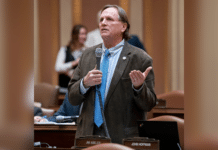Governor Tim Walz plans to request a roughly $2 billion bonding package for public construction projects spread across four categories, which includes spending $276 million on affordable housing.
Walz cited low-interest rates and past fiscal responsibility resulting in the states’ estimated $1.3 billion budget surplus for the historically high investment.
“To not do this, is not only wrong for future investments; it’s fiscally irresponsible,” Walz said.
About $200 million of the $267 million proposed for housing infrastructure bonds is planned to be competitively bid to public and nonprofit housing developers across Minnesota, Lt. Gov. Peggy Flanagan said.
“Housing is a fundamental building block to strong people, strong communities, and a strong economy,” Flanagan said.
Walz said the $267 million would fund existing affordable housing and new housing, including supported housing for people experiencing homelessness, as well as seniors, families, new homeownership housing, and veterans.
Bonding bills require a three-fifths vote from the House and Senate to pass.
Republican leaders in the Senate responded that bonding is a main priority to invest in transportation and infrastructure, as well as continued fiscal responsibility.
“The Senate Capital Investment Committee has visited many projects that are worthy of consideration, but we also need to be responsible for what we borrow. It’s not just free money, it has to be paid for in the long run by future legislators,” Sen. and Capital Investment Chair Dave Senjem, R-Rochester, said in a statement. “With all those considerations, I’m confident we will work together with the House and Governor to fund the right investments for our state.”
Senate Majority Leader Paul Galelka, R-Nisswa, said he’s more comfortable with a bill closer to past bonding bills, adding that “today’s borrowing impacts tomorrow’s spending.”
“Senate Republicans are committed to working with the House and the Governor to get a bonding bill that will best serve Minnesotans,” Gazelka said in a statement. “The budget forecast allows for borrowing $755 million in General Obligation (GO) bonds. The past two bonding bills were $825 and $998 in GO bonds.”
“Surpluses come and go, but obligations remain the same; like a household budget, we don’t just borrow money because we can or because we can get a good deal.”

















